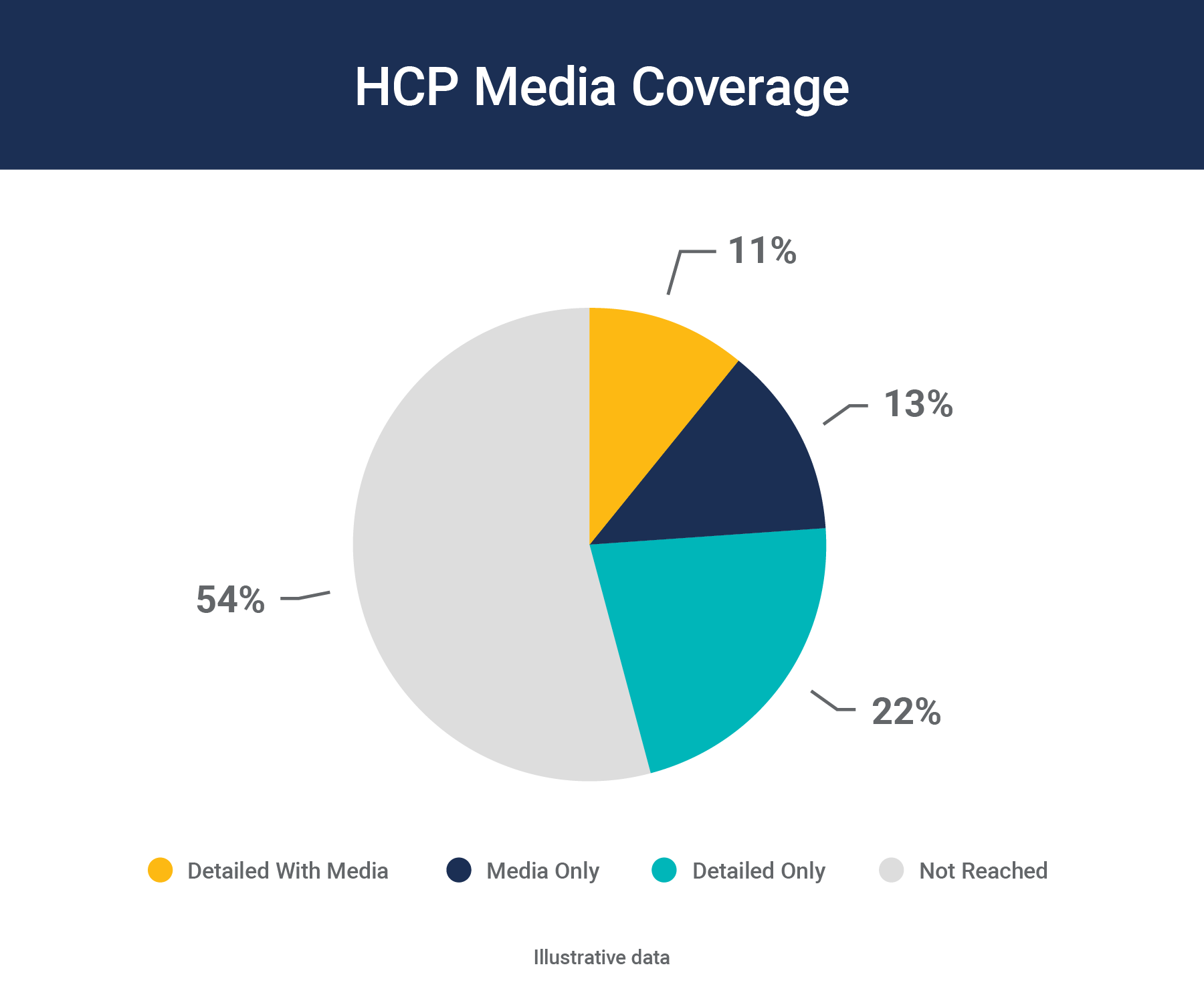Some things are better together. While field force activities and digital advertising can be powerful on their own, timely coordination of the two can create an even greater business impact. This “synchronization” helps biopharmas such as Pfizer maximize marketing and field efforts across their organizations to improve engagement with healthcare professionals (HCPs). By creating this enhanced customer experience for HCPs, some brands see a 23% increase in marketing effectiveness.1
The idea of synchronization may seem straightforward, and in concept it is. Digital ads reinforce the brand message and provide additional touchpoints to complement field activity within a certain timeframe. However, many biopharmas fail to synchronize engagement and digital touchpoints in a timely manner for 73% of HCPs.1
Many factors contribute to this number, but the biggest gap is that sales and marketing often operate as individual units. Field engages with HCPs and marketing runs digital ad campaigns and often little coordination exists between the two. With synchronization, the success of one is dependent on the other. But if those relationships are not in place, putting synchronization into practice can be challenging.
 To benefit from these coordinated efforts, you need to lay the groundwork for success. Here are three key steps to keep in mind along with some insights Pfizer recently shared.
To benefit from these coordinated efforts, you need to lay the groundwork for success. Here are three key steps to keep in mind along with some insights Pfizer recently shared.
1. Create Shared Goals and Execution Across Sales and Marketing
There’s a lot of talk about the benefits of removing silos. Yet many organizations struggle with how to get started, especially when there’s a good chance the boundaries between teams have always existed. But this change can be doable.
Adam Escalante, U.S. Melanoma Lead at Pfizer, has successfully put this into practice. He stressed that the most important step is getting both teams to commit to a new way of working—not only today, but for the long term. “It’s easy to fall back into those silos,” he said. “But our marketing and commercial leads have made this a big priority to ensure those sales and marketing connections grow.”
By collaborating, the teams have created a unified target list that everyone works toward. “With full alignment, the sales goals are the same as the media goals, which are the same as the marketing goals,” he said.
2. Implement Standardized Analytics
Shared goals and execution require standardized analytics across the organization. Taking an enterprise approach to integrating CRM and marketing data can help achieve this. Connecting marketing analytics to field engagement gives both teams a full view of customer engagement. Not only does this create a better experience for HCPs, but it also makes it easier to be more agile and adjust strategy together.
3. Integrate Sales and Marketing Data
Often, field and marketing develop their target lists separately, based on HCP affinities, data availability, and digital behavior. Some field teams may engage with HCPs based on prior relationships—and these HCPs may or may not be on the NPP list. Integrating the sales and marketing target lists can help you better synchronize and identify overlap.
“Once we decided to prioritize synchronization, we redid our HCP segmentation for both media and the field force, to create a single media target list, across all indications,” said Escalante.
Measuring Synchronization
If you cannot measure something, you cannot improve it. To fully measure how synchronization is performing, you need to know whether a prescriber was detailed, saw digital advertising, both, or neither. Integrated data creates the foundation for measuring synchronization. “When people hesitate about measuring media, I always ask: then why are we spending money on media at all?” remarked Escalante.
Synchronization will change the way field and marketing teams approach HCP marketing. And, better coordination of field and marketing efforts creates a better customer experience. It requires shared goals, an enterprise approach to analytics, and the integration of CRM and marketing data. “Whoever the field is reaching, I want the media to reach,” said Escalante. “It’s only possible because of synchronization.”
References:
1. Veeva Data, January – December 2022.









